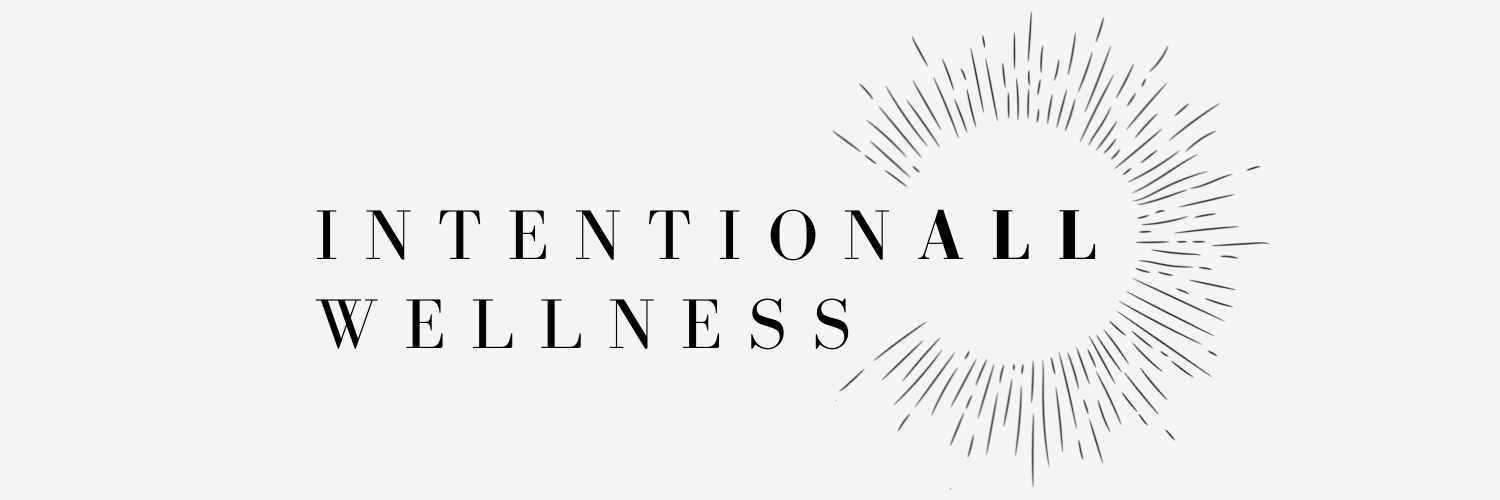|
I am stepping into this new work, Structural Integration. It doesn’t negate or make the work we’ve done together in the past unimportant, it just broadens our horizons and changes the intention and the way in which we work.
Structural Integration weaves together a strong understanding of myofascia (muscle + fascia) and the relationships which they operate within, with: assessment, intuition and collaboration. It is a beautiful system that allows us to unlock your movement patterns and bring you into a more functional home in your body. Life, and our bodies are full of challenges, getting to know yourself better can ease some of those challenges. The three series of sessions that I’m currently offering as a student are a blend of the fascial lines that will be addressed individually in the 12 series I will be offering starting in January of 2025. These 3 sessions - completed within 2-3 weeks - can be a powerful catalyst for awareness building and structural change in your body. We start with a thorough assessment and then address your fascial outer layers starting from your feet to your hips in session 1, your hips to your shoulders in session 2 and your spine from tail to top in session 3. We talk about the 1’s, 2’s and 3’s in Structural Integration. 1’s are your easy movements that you can take up in everyday life without even thinking about it - think walking maybe. 2’s are your movements that require focus, warmup and work - think squat or lunge maybe. 3’s are the movements that are unavailable to you because of pain, mobility restriction, etc. You may not have any awareness of most of your #3’s because your body just won’t move in certain ways. It will borrow flexibility from other areas and deepen your stuckness. These #3’s build and build and eventually cause great disturbance in multiple systems in your body. If you have an area that’s not moving well, it can affect your circulation, your nerves, your lymphatic system and your myofascial system. That’s a minimum of 4 systems not optimally functioning. Wouldn’t you like to be operating from the best place you could be? Let’s talk about some A’s B’s and C’s of who’s ready for SI. Some of you may not be ready for this work yet for any number of reasons. Global inflammation is a contraindication, we can’t ask your body to make big structural changes while it’s already fighting a battle. That might look like a nutrition referral for you. Address the inflammation and then we can work together. You might not currently have the energy to undertake this kind of work. What is your life like? Are you already overextended? Not a good idea to take on this type of work. Are you dealing with a heavy emotional burden currently? Are you abusing substances? That might mean you need to undertake some mental health counseling before or concurrently with our work. Do you have a consistent movement practice or are you willing to undertake one? If not, your fascia will matte right back up into a giant fuzz like it already might be. This is a collaborative process that requires effort and engagement from you on all levels. Are you ready? I am ready to help you step out of the dysfunctional patterning you may find yourself in. Honestly, you might not even know it’s there. I wasn’t aware of some of my own limitations, we’re human. If you think you’re ready, reach out and let’s talk. Let’s grow together.
0 Comments
Anatomy Trains Structural Integration Training Part I. San Diego was 3 weeks in a different life. Stripped of home, husband, puppies, routines, comforts, all of it. Heading out there I had every intention of maximizing every moment with my friend and colleague, Rachel Graham. We had a lot of mobility content we wanted to film, conversations to capture, many plans. However, on the way out there, I messaged and let her know that I was in a precarious way. I was feeling the exhaustion of completing a big project and working long hours prior to leaving. She was, too. I asked if we could just make sure we ate good food and moved our bodies daily for the first week. That ended up being our strategy for the entire trip. We did it! We cooked good food and we moved our bodies everyday, in addition to our 8 hour immersion style school days. It was a win. Every day was an opportunity to see if I could really take care of myself. We also got to spend time in nature on the weekends, La Jolla tide pools, safari park adventures, and more.
I was known at school as the hydrator, my commitment to my gallon of water never ceased. At the end of every day we sorted through what we affectionately called “brain pho” and tried to differentiate the gobs of material we’d covered. We’re still doing that, actually. We’re studying weekly until we return for part 2 of this training at the end of April. Learning with a small group of curious individuals with diverse backgrounds and histories can be a life changing experience. It certainly has been for us. I actually met my good friend Rachel at a fascial stretch training in Arizona. We clicked on all the levels. We joke that some people meet us at different corners or intersections of our lives, careers, humor, etc. We meet each other at all of them. It’s a pretty rare find. We spent 3 weeks in an airbnb happily coexisting and cohabitating with lots of laughter and nary a spat. Well, maybe there was the one about olives on nachos. That’s a no for me. Every class day started with some movement, maybe it was meditative, maybe it was playful. It was always intentional and connected to the concepts we were going to cover that day. Maybe it was connecting with another person, back to back, and seeing what surfaces would connect and which ones wouldn’t. One day it was rolling around on the ground trying to recreate movement by following where your eyes took you, like a baby might. One day it was a ruckus dance party, another a smooth set of spinal opening waves. It was thought provoking, fun, magnetic, lovely. So inspiring to be in a space where movement snacks are a curated part of the learning experience. Each day we sunk our teeth deep into anatomical and movement related topics. The relationships of the bones of the feet and the compartments of the lower leg, the fans of the hips, the pelvis and ribcage relationships. Everything is connected, but we sifted through those connections with a fine toothed comb to make more sense of them. So that when we say “everything is connected” we can think through what is connected to a particular issue in a grounded and scientific way. There is still plenty of unknown and magical mystical parts of bodies and bodywork, but the approach here is to ground our treatments with knowledge, assessment and movement to ensure that we’re helping our clients in the most effective way possible. Many times an area might be getting all of your attention, and the problem isn’t there. So instead of pressing deeply into an area that is likely not the culprit, we can hopefully help your body reposition to a more functional state. As we journeyed through the entire body Ms. Frizzle style (hope you’re old enough to have watched the magic school bus), we gained a deeper understanding of our own bodies and movement patterns. This new understanding and deeper excavation of things held, both emotional and physical, had a very powerful effect on me. It helped me assess some current movement practices I had that weren’t serving me anymore, some rigidly held ideals I was clinging to that weren’t really mine. Another layer peeled back. Each time this happens it’s scary. You think you feel so secure in what you're doing and how you’re doing it, only to continually realize the impermanence of everything. It’s a pretty great place to be. At the end of 3 weeks, I had let go of some patterning in my shoulder and my abdominals that opened me up to exponentially more freedom of movement in my body. Not only that but I also got to experience some of the discomfort that comes with powerful structural change. For all of it, I am grateful. It was very challenging, I was out of my comfort zone in all the ways and movement felt very different. My experience of myself and who I thought I was changed immensely. I’m still sorting through it. Moving forward to part 2 of this powerful program April 22-May 5. I will be looking to treat 16 individuals with the ATSI 3-Session Series. This series of sessions begins with BodyReading postural assessment, and then techniques for balancing the pelvis, the shoulder girdle, and the spine. The 3 series of structural integration is a great introduction to structural bodywork, and clients often report improvement in posture, breathing, movement, energy, and improved body awareness. Please reach out if you would like to work through a 3 series with me starting mid May! One of the MOST frequently asked questions is, “How often should I come in?” Now, while I still believe there is a very personal and individual answer for each unique human, let’s delve into some guidelines that may help. I harp on this concept of “attunement”. Getting to know yourself and what exactly it is you need. We are all in a different place on that journey and it can be hard to know what you need at times. Times when you are grieving, depressed, anxious, these are times when it’s helpful to have an idea of what your frequency could be to aid as a coping strategy in your recovery. I generally have an idea of what my frequency should be when it comes to all of the forms of bodywork/recovery I participate in, but have created a bare minimum standard that keeps me in line with my priorities that can serve me when I’m not sure or don’t know what I need as well. I started receiving a somewhat regular massage around 12 years ago. Initially I was your classic “wait till everything hurts and I feel like I might die” client. There is no judgment for that version of Tiffany or for you if this resonates. I share this to explain that a 60/90 minute session would provide me with some relief, but soon after I would feel very similarly. I wasn’t taking good care of my body and was expecting a massage every few months to bring me back to life. That was unrealistic. While the massage was helpful, I was operating from lack and deficit and one session every so often was not enough to keep my body in the shape I wanted to operate from. At the time, I was walking dogs, practicing yoga and kickboxing and cycling several times a week. I was taking a LOT out of the tank and not putting enough back in. Many of us operate from a standpoint that our bodies are separate from us, especially with language like “my body is attacking me”, “why is this happening to my body”, “it just happened overnight”. These feelings are valid, but as it turns out, our body and brain and spirit are a fully integrated unit. Sometimes there is some disharmony in that unit. It can be helpful to shift that perspective to “what does my body need to feel harmony?”. This kind of shift usually doesn’t happen overnight. For me, it was a combination of consistent therapy and bodywork that created an enormous shift in my outlook and my body and my awareness of what I needed to succeed. I never thought that at almost 40 I would be seeking to be a professional pickleball athlete, but life has served me an opportunity and here we are. I’ve always loved pickles, so why not? Bodywork is not best served a la carte. What I mean by that is what you do at home is of ultimate importance as well. Learning where your problem areas are through bodywork and addressing them with your own activity practices is the ultimate path to healing and thriving. For me this has taken a vast combination of therapies: chiropractic, massage, stretch, physical therapy, acupuncture, dry needling, yoga, pilates, weightlifting, boxing. So. Many. Things. My sense of self and what I need has led me to this diverse array of activities and recovery. Your journey could be completely different, but being open to and curious about what you need is the key ingredient. So, what does all the above mean? I really want you to work toward knowing what you need and when. It is so empowering to know and trust yourself about your body. You will always know more about yourself than I do, period. This blog is meant to guide you if you are at the beginning of your journey, at the middle, or just want some practical guidance on frequency and timing to consider.
If you are in a high stress environment I recommend a frequency of 2-4 sessions a month. Examples of a high stress environment include: a high stress job, grieving, loss, recovery from injury, experiencing chronic pain, experiencing a musculoskeletal condition, an athlete, experiencing high level anxiety or depression, or any combination of the above (cuz we complicated humans). I wouldn’t recommend anything that I myself don’t participate in. I receive weekly massage, biweekly stretch, biweekly acupuncture and monthly therapy. Is that expensive? You bet. I have come to the conclusion that I am my best investment. My health and well being matter to me more than an extra vacation, remodel of my house, eating out, a fancy car. These are my financial priorities based on my values. You have to decide what yours are and what you value most. If you are in a lower stress environment I recommend a minimum of 1 session a month. This can help you understand what your problem areas are and can provide you with the fantastic benefits of improved circulation, sleep, mobility, clarity, connection to self. Many times my monthly clients, heck, even my weekly clients will say “I had no idea that was tender” in reference to an area we are working. This is a great way to learn what your movement patterns are and where you need to focus your own energies and practices. Where we feel pain is rarely the area where the pain or dysfunction originates. If you are unable to afford even a monthly session, then budget a bimonthly session. Having some sense of predictability and scheduled recovery is really impactful for your body and brain. Time gets away from us and we go 6 months, 1 year, even longer sometimes between care. This can create frustration and shame and a slew of other feelings about our bodies. How much time do I need? This is also a question I field frequently. My recommendation for timing is as follows:
If you ever have any questions about your frequency or how much time you might need, just reach out! I’m here to help be your guide as you grow in your relationship with yourself! You open your eyes and your body jolts with excitement. You throw your toothbrush in your kit and you kiss your puppies, hairless puppies (kids) or lizards or whatever creatures you may have and you’re off. Maybe you’re in the back of the plane, maybe you sprung for first class, it doesn’t matter: it’s vacation baby. That time when you get to do all the things you want to do when you want to do them. Maybe you’re a planner, maybe every moment is accounted for. Maybe you are a “themer”, you have a plan-lite with ideas of how you want the trip to go. Maybe you just straight up wing it, knowing you will have a good time no matter what happens. Perhaps you are a combo of all three. It doesn’t matter how you do vacation, whatever floats your time off boat, hell yeah, get it! We went to Kitchener, Ontario this summer, a town near Toronto, Ontario in maple-y delicious Canada! It was magical. We had a theme, “water features”, and boy did we water feature. I like to move and do activities on vacation but also rest and recover. My good friend and colleague, Rachel Graham, hosted us and took us on a magical adventure of her province, it was simply providential. We kayak/floated the Grand River nearby to Kitchener, got soaked on the “maid of the mist” at Niagara Falls (the Canadian side is indeed prettier), visited Lake Ontario, Huron and Erie, and even drank water everyday. In addition to the glorious water features and a completely new experience of being kissed by the sun instead of horse whipped, we lifted weights every morning at her gym, hiked in the forest, played pickleball, did a mobility class in a gorgeous park, experienced a food tour in Toronto, met some of her family and friends and ate some delicious foods. It was a perfectly balanced vacation for me. I got to do all the things that I love while also trying new things and having ample time for recovery. I never felt rushed and had such a wonderful time with Chris, Rachel and all the Canadians we came across. In addition, during a traffic-filled moment that could’ve had us annoyed and stressed, we enjoyed some fun Canadian wildlife and also birthed our recent social media project - “Reconsider this Corner”. We took a challenge and made it an opportunity to discuss concepts that matter to us and why they should matter to you. What a gift! Needless to say, it was hard to say goodbye and come home, even though I love my life and work and activities in Texas. Since I was a child I have had what I call the “post vacation bluesies”. I can vividly remember crying at the pool when I was 8 years old after coming home from a fun visit with a friend one summer. Some folks get these, some do not. Some people come back from vacation ready to hit it and get back into their routines. For me, returning has always had a tinge of sadness and even a touch of depression. However, over time, I have learned what can help me personally when I come back home. My vacation/post vacation strategies are fairly simple, but I’ve discovered they really help me not to derail. Rachel and I talked about “attuning to yourself” in one of our recent - reconsider this corner - posts on Instagram. What we mean by that is learning about yourself, knowing what you need and when. It’s a lifelong journey and ever changing, just like we are. It can be rewarding and even fun to do this. Instead of feeling like a victim to your circumstances you can learn how to help yourself by knowing what you’ll need, sometimes in advance! So, what do I do? I model my vacations similarly to my home life in some way and entirely differently in others. I don’t schedule anything. My life is very structured, planned and scheduled at home, and I love the break from that. I wake up every morning, spend 10 or so minutes seeing how I feel and then start making decisions with myself, partner and whoever I’m traveling with on what the day could hold. I’m flexible if things need to shift and stay open for fun that can spontaneously happen. You may like to lay about on vacation, that is totally up to each individual, and laying is nice! For my mental health, I love doing something hard, especially in the morning, to get my day started off. Travel days are my body rest days and the rest, I like to move and groove. Sometimes in similar ways that I move at home, but I like to change it up in some kind of way. Try a new gym, try a new class, challenge myself or take it easy depending on the day. Secondly, I limit my drinking to a day or two and I don’t overdo it. I’ve found that alcohol can really derail my mood if I overdo it, and I want to be able to enjoy my vacation. By limiting my alcohol intake to the middle days of a vacation, I give my body a chance to recover from the travel before increasing the load of toxins it has to process. The same goes for the back end. I don’t drink in the few days leading up to my return so my body can again reset before travel and be ready to return to my at home routine. I choose mostly similar foods to my normal diet and have a few things out of the normal so as not to shock my system too intensely. I discovered that feasting also has a big impact on my mental health and makes me feel sluggish and sad. I limit the fun choices so I can feel good and do all the things I want to do. These are my strategies that help me keep my balance on vacay and also ensure a smoother, less blues-y return to home. I also pre-plan self care for my return. The day after I get back I get a massage and adjustment to help workout the travel kinks and whatever new patterns emerge from different styles of activity. This also helps prepare me for my return to work by enhancing my sleep, my bodies ability to recover and grounding me. I ease back into my life by reducing my workout schedule a bit that first week back, maybe I lift slightly less weight, or spend 1 day less at the gym. Whatever feels right. By planning for it, I mentally don’t view the lessened schedule as a failure, but as a planned easing back in. How you view things makes a huge difference in how your body responds to them. You can feel peaceful and at ease knowing it was part of your plan.
Now, all of these things said, some of this might work for you or none of this might work for you. I am simply sharing my experience as a potential format for how you can think about what does/doesn’t work for you when it comes to vacation and returning to your life. Please enjoy the Canadian photo dump! Happy end of Summering friends (or if you live in Texas like me, happy next 3 extra months of Summering). What is recovery? I call it coming home. Checking in and giving our bodies (the only house we get in this lifetime) what they need to be functioning well and with ease. What creates the need for recovery? Daily life, hard exercise, lack of exercise, stress, work. You get the picture! Do you already exercise? Great! You still need recovery! Recovery helps keep us mobile so we can do all the things we love. Mobility is the intersection of strength and flexibility. We need strong and supple muscles to help us have good range of motion and healthy joints! Let’s explore some types of recovery that can help us get where we want to go in our bodies with ease. Types: Passive - massage, fascial stretch (fascia = the connective tissue that surrounds everything in our bodies - muscles, organs, you name it), chiropractic, acupuncture, oil treatments, compression therapy, infrared sauna, facials. These passive recoveries have different levels of efficacy based on what your goals are. Say you are having muscle pain, a facial might not be your top choice. It can create a high level of relaxation in your body if you’re feeling anxious or high levels of stress, though. Active - walking, cycling, certain types of yoga: yin, restorative, nidra or irest, swimming, pickling. When I talk about these forms of exercise above as active recovery, I’m referring to an easy pace that keeps your heart rate low and promotes blood flow. Not an all out bike ride up giant hills or a fast, competitive swim, etc. When and why? What are your daily activities and responsibilities? Are you an athlete? A working mom? A desk jockey? A combo of all three and then some? We need to consistently move our bodies in ways to combat flexion (sitting and internally rotated in the upper body) - our near constant state when working any job. We also need to consider that we need to be training our hearts (cardio), our muscles (strength) and working on our mobility (joint range of motion) and balance throughout our lives. Does this feel like A LOT? Well, it is. Many of us go through life not really thinking about our bodies and expecting them to jump and do whatever it is we want from them at a moment's notice. We need to care for, cultivate and train our bodies so that we’re ready for the hard and fun stuff when it comes along. I love that I can roll around with my niece and nephew on the floor, beat them in foot races and teach them yoga. I’m the faunty (or fun aunt as one of my clients so aptly named herself). I love being able to run around on the pickle ball court for 5 hours if I want, or go for a run, or climb up aerial silks. These are the gifts of a lot of hard work and training that have prepared my body to move well and with ease. I want for you to experience that ease as well. It takes hard work, commitment and showing up for yourself consistently. You will be amazed at how good you can feel and how ready you will be to tackle any challenge if you give your body what it needs to properly recover. My typical recovery buffet: I participate in some form of recovery every single day. Most days I have active recovery on the menu and 3-4x a week I engage in some type of passive or nearly passive recovery. Active
These types of movements and therapies are part of the picture, the other key building blocks are adequate and restful sleep, proper hydration (water and electrolytes), and nourishing foods that help repair your muscles and set you up to keep at it! If you have questions about proper nutrition or are wanting to get into a movement plan but don’t know where to start, I have some great resources on my website to help you with those things. I am at Urban Hippie to help you with your soft tissue (muscles, fascia, joint capsule) whenever you need me! I understand that we all have different time commitments based on our work and family life, etc., but I challenge you to reprioritize some of your time for your own upkeep. You will never regret taking care of yourself. Instead of chasing pain and feeling at odds with your body, make the choice to care for and connect with your body in a curious way and give yourself the dedication and consistency needed to move and live with ease. It’s been a real year. Tons of things to be grateful for, some heavy grief and a lot of perspective. Focusing on what you're grateful for can help you when you’re sad or grieving. Sometimes it does, and others it just doesn’t. Sometimes you’re so fucking sad that all you can do is just be sad. That’s okay. It feels scary, though. Like if I allow myself this much sadness, will I just live in sad? Will my sad aunt just hang around forever? I say “sad aunt” because I think about my emotions like relatives stopping in. Who knows how long they’re going to stay, but I try to be hospitable, offer them space, a drink and a place to be cozy, felt, heard, lived and understood till they’re ready to leave. One of the hardest parts for me about truly being with grief, myself, and emotions, is facing those parts of myself, those shadow-y bits, the parts that I struggle to love. When we are happy and regulated and in a good space it’s easier to be all that we are and not focus solely on the harder or more difficult parts of ourselves to love. I also never learned how to share my grief in community. How do I be sad and not affect others, but also still be with them? Sadness tends to make me isolate myself which then leads to depression. It can be a vicious cycle. I found out that a friend passed away in August. She was larger than life, she truly LIVED. I found out while I was in Mexico and I danced the night away and jumped in the ocean in her honor. In the following weeks/2 months I slept, alot. I couldn’t seem to get enough rest. I slowed down on movement and activities and I cried most days. I cried for my friend's early flight from earth, for the family and friends she left behind and the unfairness of a life cut short. Her death stopped me in my tracks. I was toodling along thinking I had lots of shit together, but sometimes life checks you, right in the gut, and lets you know you have work left to do (always,right?). During this time of sadness, I began to reevaluate what I was doing and how I wanted to live. How did I keep finding myself in positions where I was living to work, missing the moments that matter and letting myself slowly sink to last place on my list. Whether it was movement, nutrition, rest, time alone and or in nature, my work generally starts to creep into first place. I finally realized I don’t want to be “the busiest”, the martyr that misses out because I’m standing in my own way. So I made some changes, I cut out some things I was just doing to do and made space for more connection, more community, more time with the people I love. During that time I also upped my therapy, gave myself some tasks like daily movement for 20 minutes, water, food, sun, my non negotiables to help me heal. I also began a gratitude practice after the first few weeks of deep sad began to fade. When I was walking my dogs, or driving to work or mowing my lawn I just started to list everything I was grateful for. These ruminations started to expand and I began to really think about the whys around my gratitude, with that I started to grow in my ability to express to those I love, why I love them and how much - including myself - even the shadow-y, unsavory bits.
During this season, there are lots of things to have gratitude for, but there are also reasons to grieve. Relationships that are over, loved ones that have passed, human rights that are unavailable, the list goes on. I hope you’re able to experience the duality of both, the gratitude and the grief. Love to you all. I’ve just returned from what I call “love and light healing camp for adults”, aka fascial stretch therapy training. The thing about this training, it’s not just the information you discover and the knowledge you build, it’s the community, the connections, the teaching style and the bodywork that TRULY set FST apart.
Prior to heading out for the training there are prerequisite requirements to fulfill. There are 2 books to read, dozens of learning modules to complete, 10 hours of videos to watch and a 100 question test to take before you land in beautiful Phoenix, AZ. I can say beautiful this time because the weather was absolutely lovely. Mid October compared to early September, casual 40 degree difference. Last year was a little different. Last year I didn’t get to enjoy the glorious long walks and outdoor pickleball in the evenings like I did this year. I met many fabulous people, but 2 in particular who stirred my soul and made me really happy to be alive and doing what I’m doing. This training has launched my passion for the human experience in our bodies to an entirely different level, LEVEL 2! So, the Fredericks, who founded this amazing technique say that level 1 is restorative and level 2 is corrective. What that means to me and you…. Level 1 creates safety and more opening in your neuromyofascia. What’s that? That’s the webby connective tissue that surrounds your muscle and is affected by hydration, movement, stress, emotion, and many other variables. Level 2 is corrective. What that means is the space that we’re creating is longer lasting, the work within the joint space is deeper and more impactful in a more long term way. We are making space for you to function at your best. One of my favorite aspects about this work is that unlike many other forms of body work, this is collaborative. I am not performing something at or on or to you, this work is done in a connected way, we work together. Your trust and breath create the space to increase mobility. It is truly earth shattering. In my first weightlifting session post training this morning my trainer and I were both blown away by the increase in my range of motion in my squat and my assisted pull up. These are 2 very functional movements that I have been working (and will continue to work) to improve. I am able to access and recruit my muscles in a deeper way due to all the space created while I was at training. This training is unlike any other because the founders of the technique still teach their trainings. I get to feel their hands and they feel mine and give very individualized feedback. This is unlike anything else, the gift of their presence and feedback is so incredibly valuable. I told them that I will be teaching at the school within 5 years. I am in awe of this program and so grateful to be connected. If you’re interested to learn more, visit the “book” section of my website and click on stretch to learn more. Also, feel free to drop any questions in the comments! Self care can take many forms. Some say it’s bubble baths and mani/pedis, others say it’s a high intensity workout, maybe one person thinks it’s taking time off and the next thinks it’s building small moments of rest into each day. I agree with all of these someones. Self care: like nutrition, movement, and spirituality, is very personal. Each person has to find their mix. Their combination of flavors that hits just right for them. Just like some people live for spicy foods (it me), others may be completely turned off by the sweet heat. The journey to finding your mix is just that. A journey that continues your whole life. Things change, you change, life is in constant flux. The way I see it, you find a mix that works for you and then the task is calibration. We recalibrate our whole lives, but it’s nice to have a base, or a selection of activities, that make you feel at home in your own skin. This is my hope for those I work with, that you find your mix that brings you back home to you. Recently, I was dealing with grief. A friend died, much too young, and it threw my world off its orbit. That grief provided some clarity and helped me recalibrate my activities, self care, movement, work, etc. After a time of prioritizing rest I was able to recalibrate based on a new vision of life, its brevity, and how I want to live. An idea I constantly revisit is the concept of paramita - a Sanskrit word that translates several different ways. Donald Lopez, a professor of buddhist and tibetan studies, states:
What does all this ^ mean? I see it as an interesting idea that perfection means continuing on. We travel in our little life canoe from shore to shore and we turn it around and go again. All of our experiences and healing and awakening comes from the continuation of our life’s work, or living. The refinement of continuing to be imperfect as we surrender and practice this thing we call life. This helps me when I feel overwhelmed by all the choices, options and resources, or lack thereof we all sometimes experience in life. My Self Care Mix: These are things I do at different rhythms, some daily, some weekly, some monthly. I take a step back every few months and evaluate the things I’m doing. What’s working? What’s not? What do I feel I need more or less of in this season? Self reflection and evaluation are important pieces of my self care puzzle. As a survivor of complex trauma I require a great deal of self care/personal time to recharge my energy. I used to be frustrated by this, but embracing it has been a game changer. I’m now really enjoying the process of keeping myself well, vs. constantly bemoaning the work and consistency it takes for me to do so. I’ve separated my list into what costs money and what does not, both columns are incredibly important to me. Even though there is a “no money” column, it still takes resources, time, energy, etc.
Self Care is the adding up of all of the small and large choices we make throughout our days, weeks and months to truly take care of ourselves. A big piece of this puzzle is how we see ourselves, and what kind of value we believe we have. For a long time I did not take care of myself in a meaningful way because I didn’t believe I deserved it. We all deserve it. We all were born deserving of the care we usually extend to others before ourselves. We are the ones we’ve been waiting for, no one else will take care of you the way you can take care of you. I hope you are inspired to check out your own mix and look at your own choices when it comes to caring for yourself. Find your self care combination and focus on the positive things you can do, where you’re at, to support you in your journey.
Would love to know what you do to take care of you. Drop in the comments if you want to share! TW - trauma and eating disorder My introduction to movement started when I was young. I am grateful, as I know some have no starting point or modeling with movement at all. I saw my parents engage in a very punishing relationship with diet and exercise. It was cyclical. There were spurts of heavy and frequent movement with a focus on intensity, caloric burn and punishment of their bodies. A lazy body, a body that was “tired of being tired”, there was excessive negative self talk. It was an 80’s style nordic track in the bedroom, it was Calanetics, a pretty comical exercise video with an instructor with a mix of british + australian accents whose favorite tagline was “tighten the behind, tip the pelvis, let’s work that nice round peach”. We peeped from behind the couch and tried to mimic the moves we saw our parents doing. We rode our bikes around the neighborhood, we played hockey in the street and we all played some type of highschool sport, even if we weren’t that great (it me, I wasn’t great but I sure did have fun). I began my own punishing relationship with movement when I was in 8th grade in 1998 and it ended in August of 2020. Everyone’s upbringing shaped our relationships with most things. Movement, food, money, other people, lovers, kids, all of it. It’s part of our journey as adults to disentangle what we vicariously inherited through experience/modeling and figure out what feels right, what feels good and achievable for us. Some have no experience with movement as children. I’m grateful for the visuals and for the importance my parents put into their movement journey, but I had to leave behind the idea that my body was meant to be punished, because it’s simply not true. You can push yourself to greater achievement, if that is your goal, but hatred, dislike and disdain are poor companions on that journey. What I remember from all of my young activities that still holds true today. I like interesting movements, I enjoy complex movements that activate my brain and body. I like varied intensity, and I love moving with other people. I am a group mover. I do enjoy some solo exercise, but predominantly I work best when sharing the energy with others. Trauma is insidious. It manifests and creeps and entangles us in many ways until we give it the attention, the space, and whatever it is that we personally need to heal. I personally re-lived a vicious cycle with punishing exercise and an eating disorder for the better part of 20 years. Throughout those years I continued that cycle of seeking high intensity, punishing movement that made me want to puke. Fun! Now, I’m not here to demonize HIIT, running, heart rate intense activity. These types of activities can be very healthful and even delightful. I am simply relating that for a long time, I sought these activities with a mindset of “punishment”. The harder, the better, “no pain, no gain”, this was my mindset. I’ve tried so many activities. From spin to step aerobics to muay thai to triathlon. All with the intent of punishing the shame and confusion from my cells. It didn’t work. What I did create was a lot of patterning that I’m still working to untangle today. Now, I don’t see it so much as a problem or a job to move and disentangle, but more of a gift. I get to move daily and give myself love in the process. This is a novel experience for me. Throughout the many years of punishment movement I also compounded and solidified some pretty intense disassociation with parts of my body. I had a really high pain tolerance, a.k.a I was so not present in my body that I could walk on a broken foot for a few weeks or “push through” when my body was giving me so many signs that it needed rest or to stop whatever activity I was doing. I have had to train and work to understand/appreciate the sensations and signals my body is communicating with me with regard to movement, work, sleep, everything. So, August, 2020; I made a deal with myself. Move my body once a week. Whether that was walking my doggies around the block or doing dance laps in my house (which I actually did when I was recovering from being sick), move your body in some type of way at least once a week. I recommitted to a regular movement practice. One that could gracefully ebb and flow as my energy waxes and wanes. Even tuning into the way my body works as a woman to harness the power of the moon is a part of the work I am currently doing. All of this to establish a loving relationship with this beautiful body, the only house I get on this earth. We think of ourselves as separate from our bodies. There is so much language around this concept. “My body betrayed me.” “My body wouldn’t do what I wanted.” It goes on and on. When truly, our consciousness, our brain, it’s all connected inside this house. We hyper fixate on our outward expression of being a body instead of marveling at the amazing capacity and resilience of our bodies to live, day in and day out, through the stress, the beatings, the harmful words we speak over ourselves. That journey started with once a week, and pretty soon, twice a week and now I’m moving every day, for me, in some type of way. Some of those days are gentle yoga, really opening up joint spaces and moving in twisting patterns in ways my body doesn’t typically move in the work I do. Sometimes it’s lifting heavy weights or trying something new like spin class or jiu jitsu. Sometimes it looks like stealing away for a walk without my puppies. Mostly I walk with them, though. I’ve found that I truly do best when moving with others. My solo movement is generally to clear my head or change my perspective, which is very much needed but generally not as focused and in my body as other types of movement I do. I challenge myself to try one new thing per month. It keeps things exciting and challenges my mind as well my body. You might think to yourself - She moves all day as a massage and stretch therapist, and when she teaches movement. Yes, that’s true. However, that movement is for others, I am focused on proper body mechanics, but the movement is not for me or about me. So I still move, sometimes multiple times a day, for myself. It is such a gift to be able to move and I’m still learning and titrating the movements I do to balance them with recovery and rest, which are incredibly important pieces of the puzzle as well.
My movement buffet now includes:
Your own movement journey, agreements, approaches, likes and dislikes may be vastly different than mine, and that’s great! My recipe and journey are unique to me just like yours are to you. I am merely sharing my experience here to let you know that your own journey is valid, too. Your ups, your downs, your agreements (inherited or founded by you), all of those pieces are wildly individual. I want you to find what lights you up, whether that’s water zumba or hopscotch or pick up lacrosse. The world is your movement oyster, go play! And invite me, haha! I will try anything at least once. My personal blog is below. What you can expect here: honesty, authenticity, my heart, education, what I’m learning and much more. I felt the desire to begin with a combination of things I’ve learned/continue to learn and a piece of my past. A few pieces of information that might be helpful with reading. I wrote this piece when finishing my yoga teacher training in 2019. I have since edited it slightly but still feel it’s a powerful representation of my growth and vulnerability. Pema Chödrön is an American Buddhist nun and prolific writer on the topic of several types of meditation. I have blended my love of her book - The Places That Scare You with a careful study of the Yoga Sutras of Patanjali along with part of my story. I am sharing this in hopes that it will help other complex trauma survivors know that there can be life after whatever your experience has been. Trigger warning // sexual assault and incest. The Yoga Sutras & The Places that Scare You Meditation and yoga go together like yin and yang, PB&J, peas and carrots, Sriracha and any food really. From personal experience yoga is something I love, and meditation, an opportunity as some might say. I used to think I would never be able to meditate but yoga I’m good with. I have discovered they both belong to the same wheel, though. They are different spokes on the wheel, but same overarching goal, “stilling the fluctuations of the consciousness” as the yoga sutras say. In The Places that Scare You, Pema Chödrön outlines a clear path to compassion for oneself and others, the release of the ego and ultimately the fact that we are never separated from Bodhichitta, the state of being completely open hearted, enlightened. With practicality, simplicity and humor she relates her humanness and journey to accepting that in life there is no true security, solid ground or predictability. She shares her path and simple instructions for meditational practices that help to calm the anxious mind and bring peace, stillness, and joy. This exercise is an example of one of my own many personal battles when it comes to yoga. Parsvottanasana – Pyramid Pose Begin with your right foot at the top of the mat, step your left foot back 3-3 ½ feet and ground down through your back heel to rotate your hamstring from inward to outward (Is it rotating enough, my leg is already tired and we’re just starting the pose). Press your right big toe mound down and forward to square your hips (I don’t think my hips are square, I feel unbalanced, I don’t think my legs are straight, I don’t think they’ll ever be straight). Travel your navel to your spine to tuck your tailbone (I’m pretty sure it’s not tucked enough). Extend your arms to the sky and hinge at your hips to lengthen forward, hands land on the ground (Where are my blocks, I know it’s not the worst to use props, but it feels like I’ll never be able to touch the ground). The sutras say that the sādhaka, or practitioner, is influenced by the self and also by things perceived. When they are fixated on things, the mind will vacillate. The goal is then to differentiate oneself from the things observed so that entanglement doesn’t occur. Getting lost in my perceptions of inability block me from experiencing dhyāna, meditation, within the pose as witnessed above. Alternatively, if I slow my breathing, allow my thoughts to pass and find concentration in stillness (dhāranā) then meditation (dhyāna) occurs within asana; “self loses its identity and becomes one with the great Self.” We have the potential to experience the freedom of a butterfly yet we mysteriously prefer the small and fearful cocoon of ego, says Chödrön. Ardha Chandrasana – Half Moon Pose Begin in virabhadrasana II (warrior 2) and step your back foot forward about a foot (So far so good, my hip feels tight but I’m going to remain open to possibility). Place your right hand down on the floor or a block about a foot in front of your right foot (My breath is changing, but I will focus on the speck on the floor ahead of me and remain calm). Lift your back leg till it’s parallel with your hip and open your hip to the left side of the room (Things are getting difficult, I’m beginning to shake, but I have this). Stretch your hamstring up and your calf down to straighten your front leg (Still shaky, beginning to doubt, may have to come down). Lift your left arm to the sky and open your torso to the left side of the room as well (I will hold, I’m finding stillness in difficulty). In the above example of ardha chandrasana I was able to still my mind, take each cue and build the pose without focusing on my inability. This doesn’t happen every time I come to my mat but I’ve had several glimpses as such that create a new pattern, one of compassion and possibility. Pema Chödrön speaks about approaching a meditative practice with the wonder of a child, seeing the world without preconceptions and with curiosity. Suzuki Roshi, a Zen Buddhist who brought teachings to the U.S. also relates: “In the beginner's mind there are many possibilities, but in the experts there are few.” As a guideline Chödrön states that in anything we do, we set our intention to be open, flexible and kind (especially to ourselves). Bodhichitta, open heartedness, also correlates with compassion, our capacity to feel the pain that affects us all. We hide because this pain scares us. “The practices of meditation, compassion, loving-kindness, joy, and equanimity are the tools [to help us] train as a warrior.” By simply following each cue in ardha chandrasana, taking each piece of the pose and reassuring myself as feelings arose, I offered myself compassion. This type of compassion surely resonates with many other students and practitioners who have samskaras, psychological imprints, or stories they tell themselves about their bodies, their capacity, their significance. Chödrön asserts that compassion is more emotionally challenging than loving-kindness because it involves the willingness to feel pain. It requires the training of a warrior. Furthering her point she says that compassion is not a connection between healers and wounded, it’s a relationship between equals; and only when we know our own darkness well can we be present with the darkness of others. Bodhichitta training offers no guarantee of a happy ending. It is not focused on how we escape uncertainty and fear, but how we relate to discomfort. How do we practice with difficulty, with our emotions, with the unpredictable encounters of an ordinary day Chödrön posits? One of the most pointed questions Chödrön poses to ask yourself is: do I prefer to grow up and relate to life directly, or do I choose to live and die in fear? She continues by reassuring that tapping into that shaky and tender place has a transformative effect. Being in that place may feel uncertain and edgy but it’s also a big relief. Just to stay there, even for a moment, feels like a genuine act of kindness to ourselves. In Patanjali’s Sutra II.43 tapas or self-discipline burns away impurities and kindles the sparks of divinity. Zen Buddhism, through the lens of Chödrön, teaches that we train in mindfulness and maître – being steadfast with our bodies, our emotions, our thoughts. The change internally from this practice has been incredible. There has been a shift from blame and shame and self-hatred to love and curiosity and power. My gaze is forward not down. Similarly to my yogic experience in asana, I have begun to practice compassionate meditation. Chödrön shares that the way to disrupt our reactions is to (1) acknowledge our neurosis as neurosis, (2) do something different and (3) aspire to continue in this practice. Liberation from confusion doesn’t come without the compassionate recognition that we’re stuck. Letting the story line go and connecting with the underlying energy of what is being experienced vs. partaking in habitual emotional indulgence is the first step. She says anything out of the ordinary will do, running, singing, dancing, engaging in meditative bodhichitta practices, anything to change the pattern of spinning out. This work lasts a lifetime. This isn’t just a once or twice disruption and then “it’s fixed”. The compassionate practice itself involves seven aspirations. I begin with a period of quiet meditation and then by wishing “may I be free of suffering and the root of suffering.” After I have cultivated compassion for myself I then create a list of those whom I am easily able to feel compassion for: loved ones, doggies, dear friends. I then wish the aspiration for my loved ones, that “they may be free of suffering and the root of suffering”. The process continues as such with friends, neutral folks (maybe the postman, barista, someone I see on the street who is suffering), and then the difficult people in my life. The final two stages are combining all of the previously mentioned people and then extending it to all beings without exception. I’m still practicing with loved ones and friends, but I’ve got my whole life to continue onward. My Journey
I used to see the word “yoga” on group exercise schedules and think that’s just not hardcore enough for me, probably a waste of time, but a few of my triathlon teammates recommended it for the tight hamstrings that running so bountifully provides. When trying it for the first time in college I found myself enjoying the bodily benefits but not really picking up on the spiritual aspect at all. I left my faith and my community during that time, ages 19-21, and was so enraged at the church and the thought of anything that mirrored spirituality or religiosity just fed that anger. I arrived to yoga more fully at age 26, bound and broken by my inability to “get over” what happened to me as a child. I was hurt, angry, scared and really sad. I was constantly mourning what my life could’ve and should’ve been like instead of focusing on the fact that I still had a life, my health and the capacity to rebuild. At 26 I had come to face the fact that I had been sexually abused for several years during childhood. I was paralyzed with fear and did nothing to stop it. I know it’s not my fault. I cried a thousand tears and paid thousands of dollars to be able to say that, and it was worth it. However, the after effects still remain, I will never know what it’s like to relate to the world without this experience. I am, however, continuing to get stronger and more loving toward myself and others each time I step or sit onto the mat. My parents were ill equipped and so utterly horrified and sad and they handled the situation poorly. They brought the entire family into the living room and asked us what had happened, when and to whom. I clammed up, I said I was fine, nothing happened. At this point it had been years since it had happened to me, I was fine I thought, this doesn’t define me I thought, I can just forget it ever happened. I thought. At 26, while living in San Francisco with my older brother, the perpetrator of the crimes, I felt as though I was losing my mind. I didn’t know why I was living in the couch, I quit going to work, quit showering, and quit talking to anyone and everyone. I lived in the world of Law and Order SVU with Olivia Benson, Lost with Jack and Kate, whatever show I could take part in to not have to think about why what was happening was happening. I ordered food and wine in, I ran up a credit card, I snapped at my brother, I couldn’t even look at him. I was so utterly incapable of being in my body, or even in the world for that matter that I nearly just ceased to exist by slipping deeper and deeper into my couch home that I had created. Soon after this period of months I knew I was spiraling deeply and I needed change. I sought psychotherapy and subsequently began smoking and drinking more to cope with the stirring up of painful memories and experiences. It wasn’t until I decided to come back to Dallas that I rediscovered yoga again. There was so much pain and incredible fear around being present in my body that it took a long time to make my way back. The first studio I tried when I came back was on a groupon whim. I wanted to tone and train my body and I had practiced yoga in college as a cross training aspect for triathlon training. Throughout my life, including my yoga practice, I have been very hot/cold, all or nothing, feast or famine. This includes my eating/exercise habits, my self-care habits, my relationship with food and alcohol and other substances. I threw myself into American power yoga full force. I went every single day. I’m not really sure what class I took. It was some kind of fast-paced power flow. I stood in the back, the room was dark, and that helped me to stay on my mat and out of the comparison zone. The class was very hard for me physically, but what kept me going back were those 5 minutes at the end. That time that was quiet and my mind had stopped racing and my body was buzzing with exhaustion, energy, and possibility. At the time, I was still self-medicating with cigarettes and alcohol, I thought I needed them to survive what was my life “after”. I created a set of habits that made me feel better but really just increased my pain and confusion. In The Places that Scare You, becoming familiar with the running away is key. Openness doesn’t come from resisting our fears but from getting to know them well. Chödrön says that no matter how we get trapped, our usual reaction is not to become curious about what’s happening. We do not naturally investigate the strategies of ego. Most of us just blindly reach for something familiar that we associate with relief and then wonder why we stay dissatisfied. I never felt the truth in these words more than when I finally put down these habits and realized that I wouldn’t die without them, exactly the opposite in fact. Chödrön also reminds us that we can dam bodhichitta (the state of being completely open hearted) up, but nevertheless, wherever there’s an opening bodhichitta will always appear; like those weeds and flowers that grow out of the sidewalk as soon as there’s a crack. Chödrön relates brilliantly that what we struggle against all our lives can be acknowledged as ordinary experience. Life continually goes up and down. People and situations are unpredictable and so is everything else. Everyone knows the pain of getting what we don’t want – we don’t suffer this pain because of our personal inability to set things right. We resist the basic fact that everything is always changing moment to moment. She then offers that staying open weakens our patterns of avoidance. Through continual practice we find out how to cross over the boundary between being stuck and waking up. It depends on our willingness to experience directly feelings we’ve been avoiding for many years. “The “secret” of life that we are all looking for is just this: to develop through sitting and daily life practice the power and courage to return to that which we have spent a lifetime hiding from, to rest in the bodily experience of the present moment – even if it is a feeling of being humiliated, of failing, of abandonment, of unfairness. “ -Charlotte Joko Beck I can’t say that I’ve arrived because as much as you can learn and train, there will always be more to do. The process, the present is all I have, it is the yoga, the meditation, all of it. I will say that I’ve found peace with the process, though. My breathing is slower, my body is starting to open up as my mind allows for it, and I am remaining present with my energy as it arises, be it anger, sorrow, sadness, fear, joy, gratefulness, love. As Chödrön says, we must be patient with ourselves, learning to relax with the restlessness of our energy – energy of anger, boredom, excitement. Patience takes courage, it is not an ideal state of calm, abiding with the restlessness of our energy and letting things evolve at their own speed. Hannah Gadsby, a brilliant comedian and trauma survivor, stated very powerfully that nothing is more formidable than a broken woman who has rebuilt herself. From my first time on my mat to now my approach has changed radically: from force to release, from hatred to love, from doing to being. I am constantly and consistently striving to become more present for my life, to show up and learn what it has to teach me: to notice things painful and not, and to use the past to transform my future, not to hold me suspended in fear and pain. “Confess your hidden faults. Approach what you find repulsive. Help those you think you cannot help. Anything you are attached to, let it go. Go to the places that scare you” – Advice from her teacher to the Tibetan Yogini Machik Labrön. |
AuthorTiffany Miller Archives
May 2024
Categories |

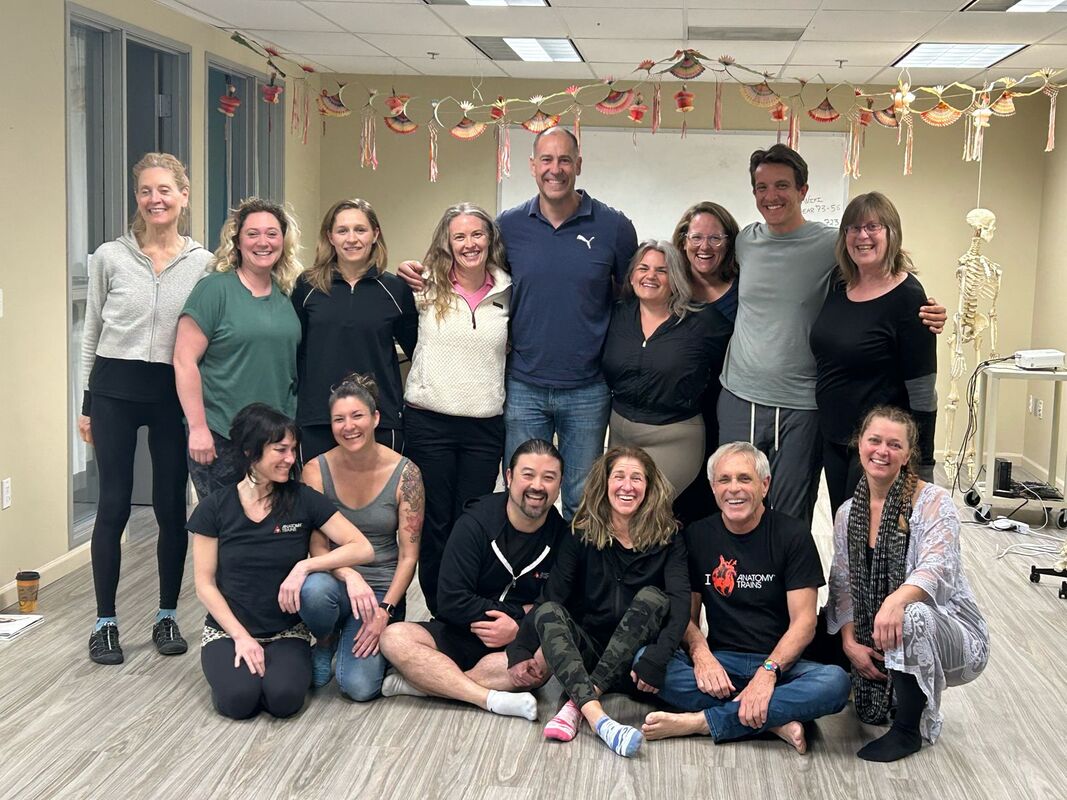
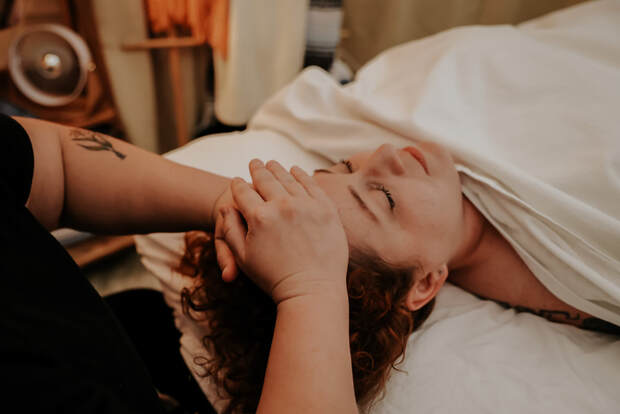
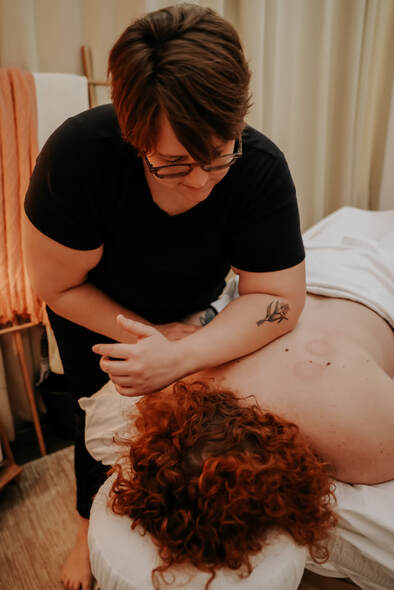
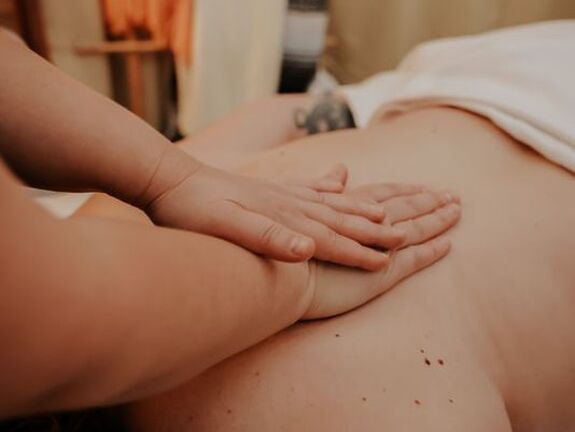
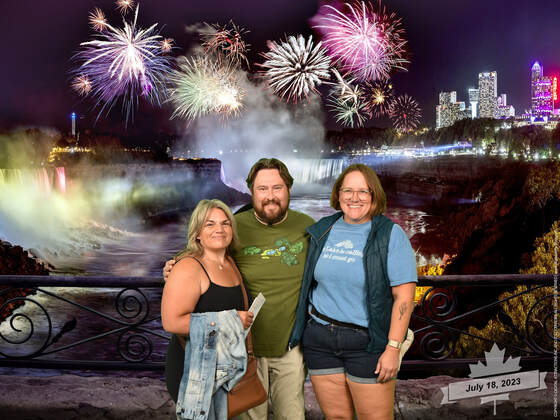
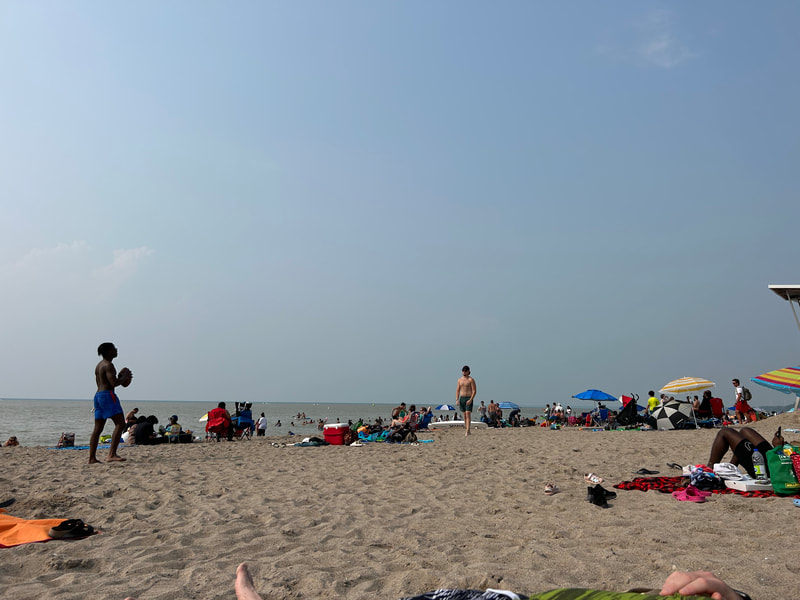
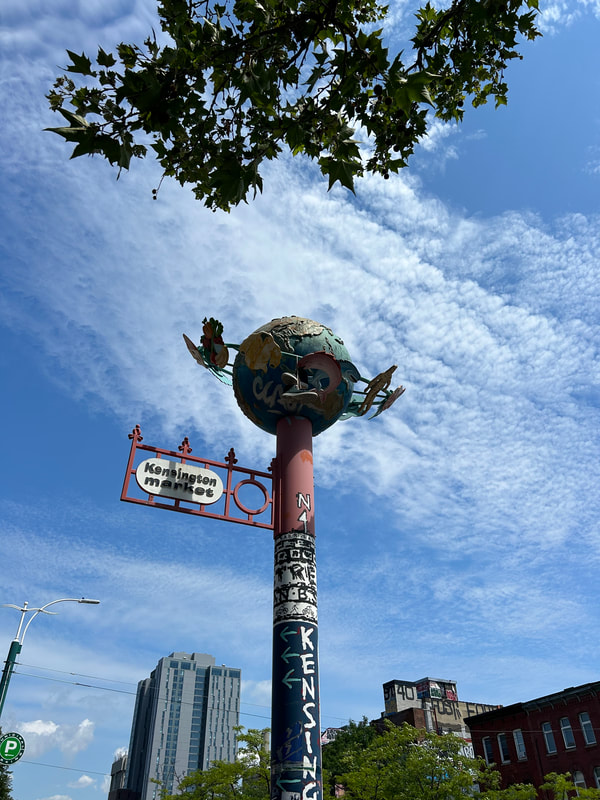
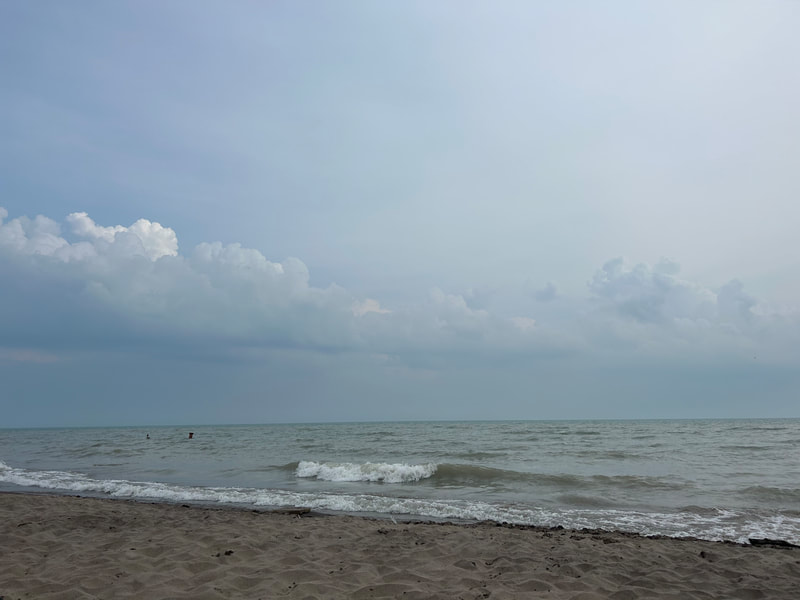

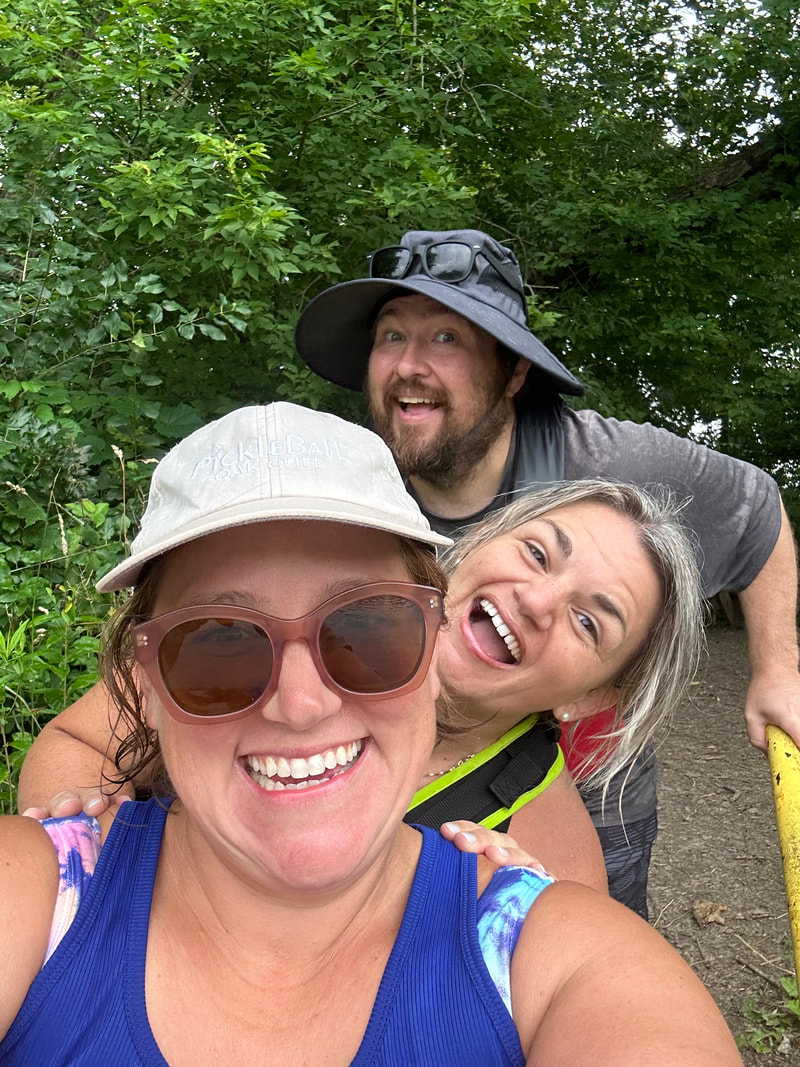
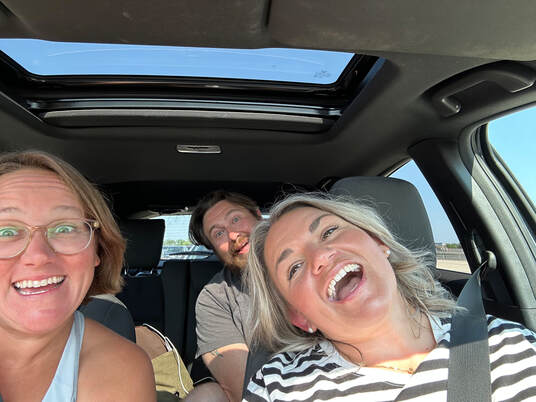
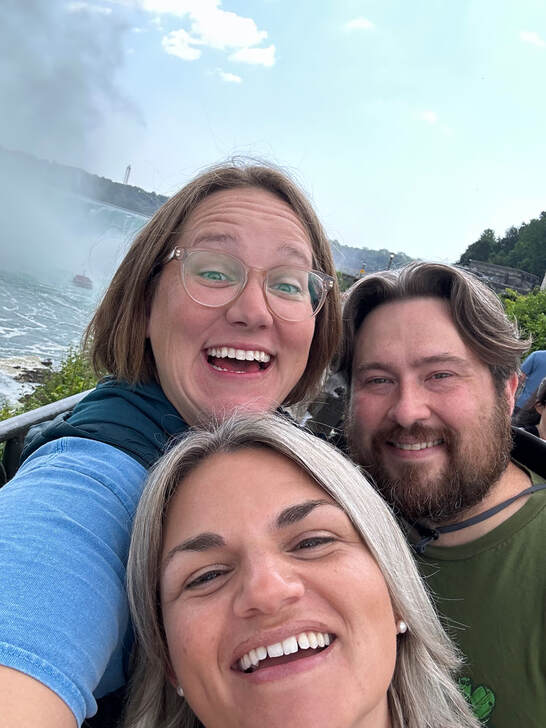

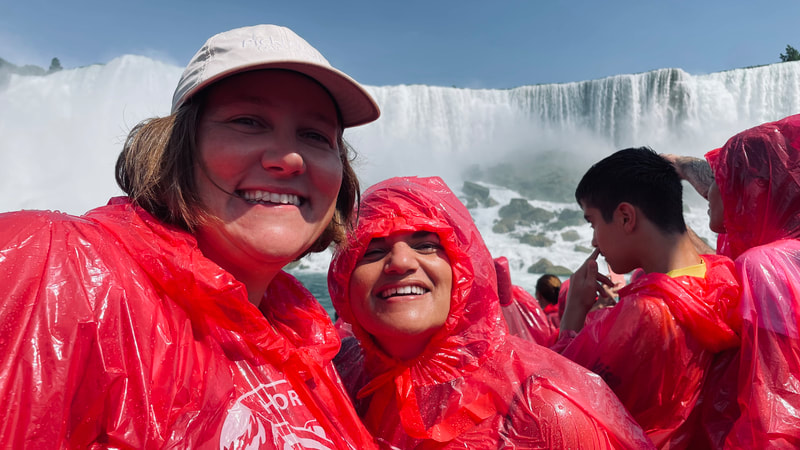
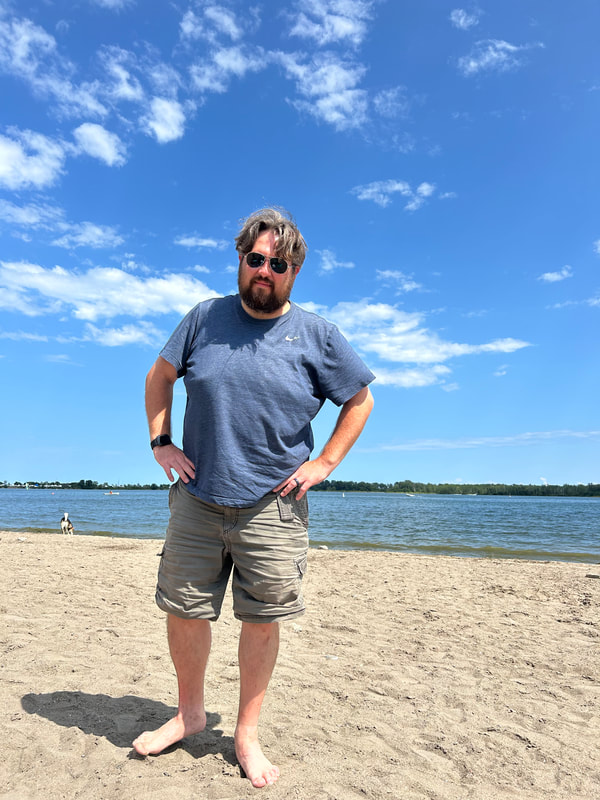
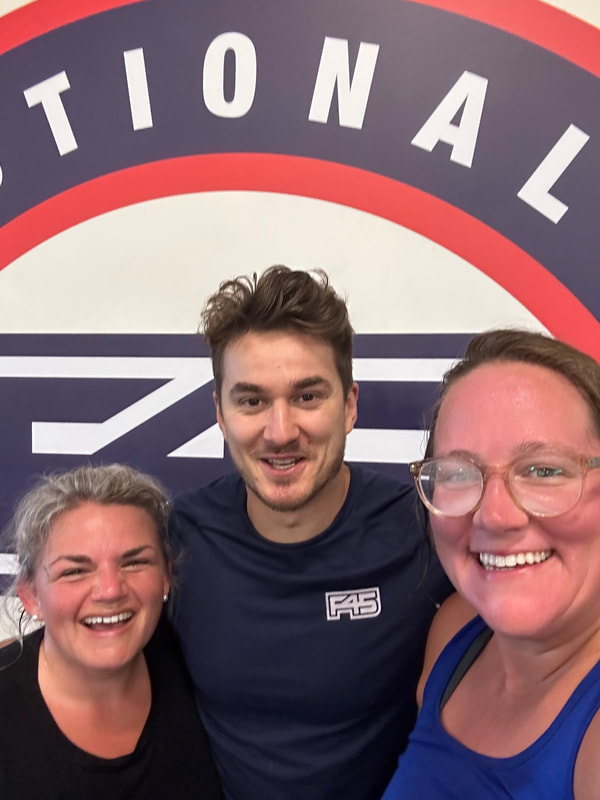

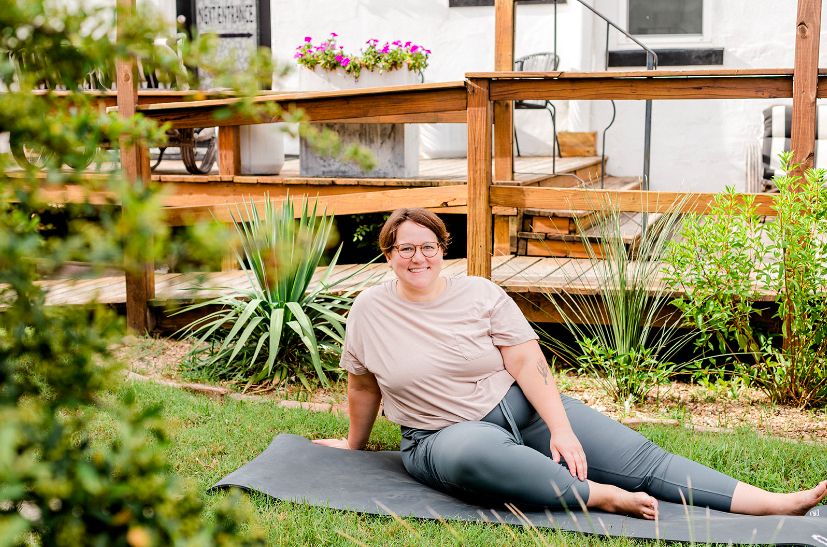
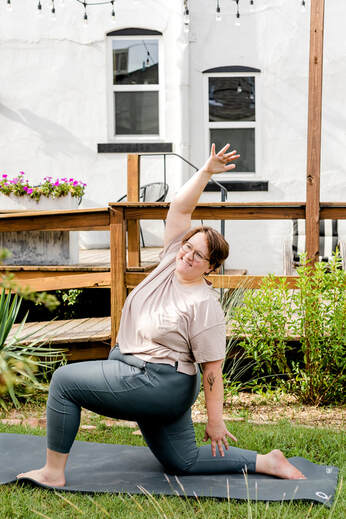
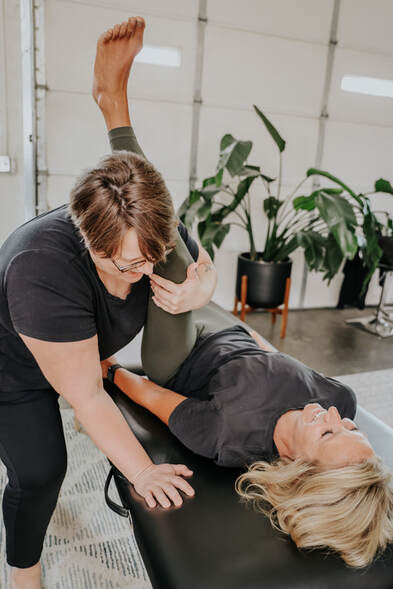
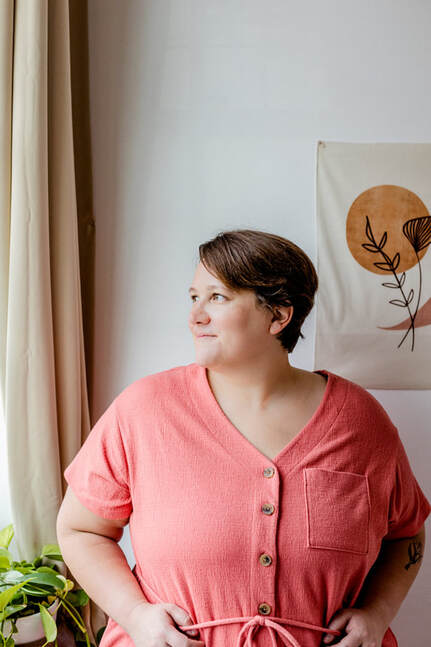
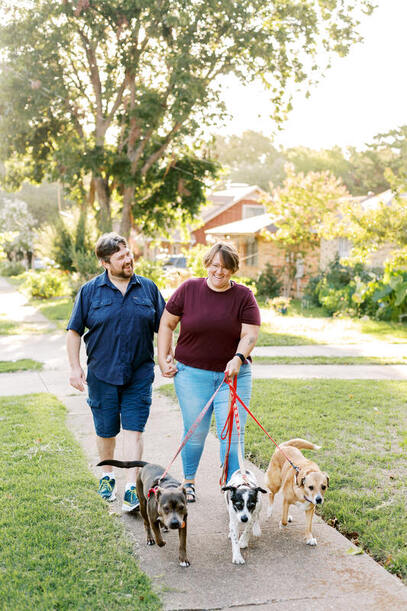
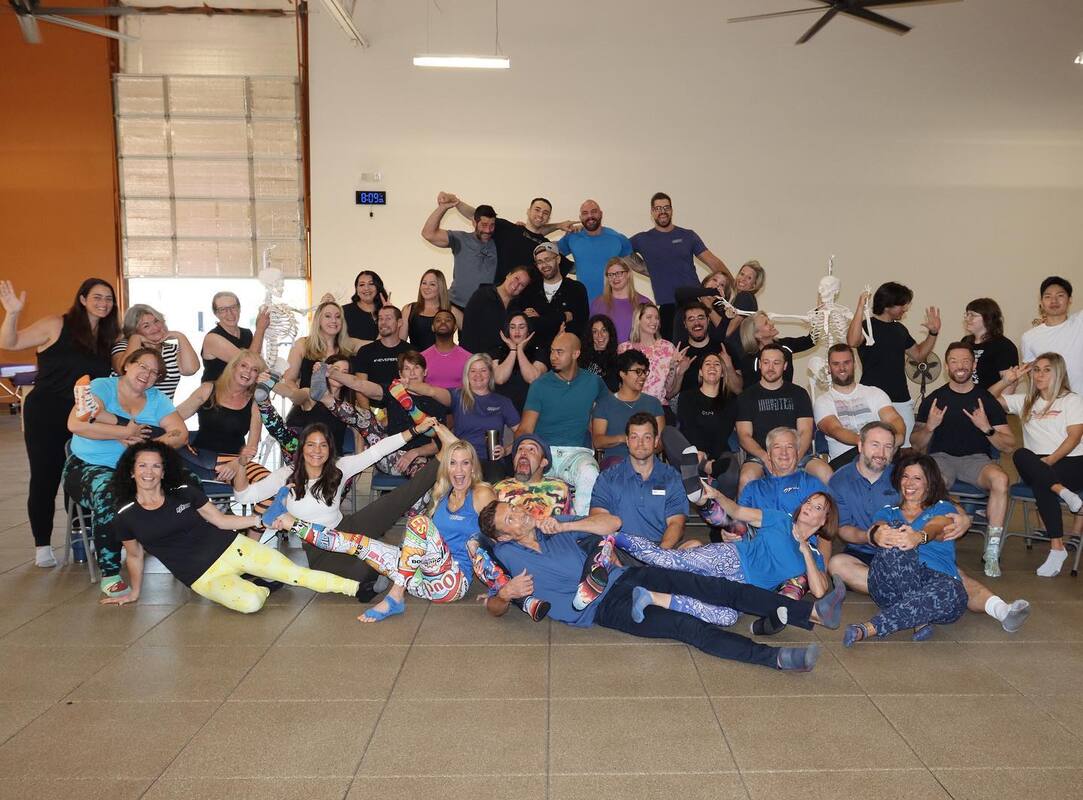
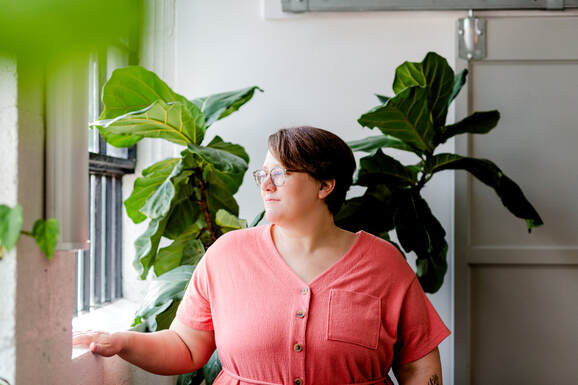
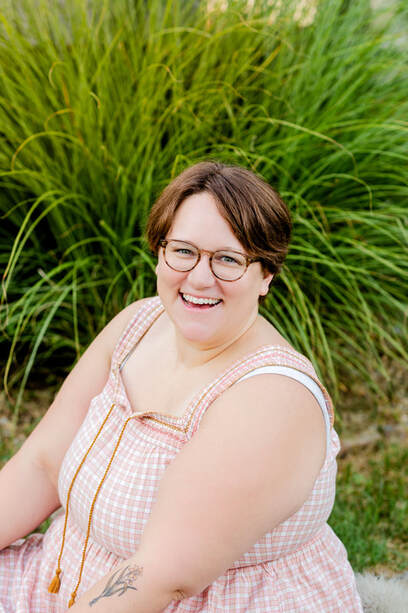
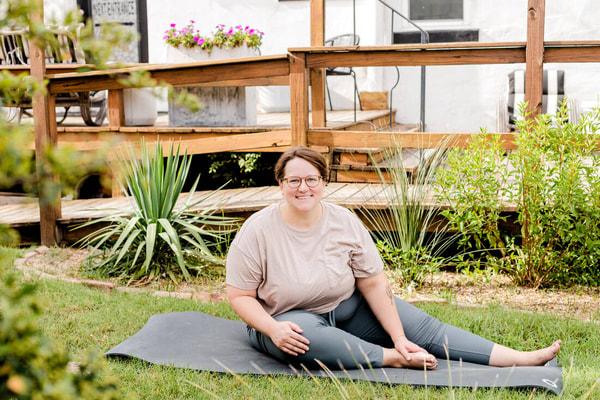
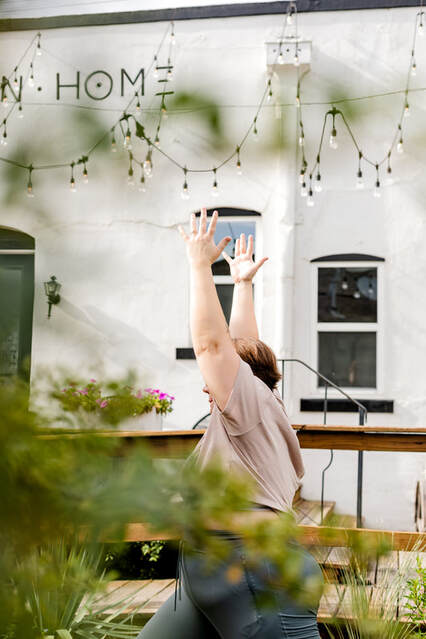
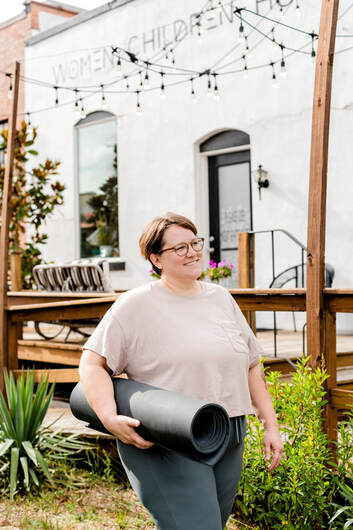
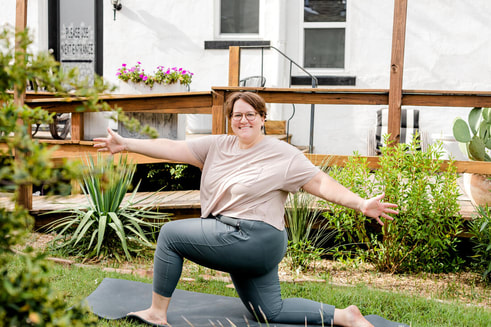
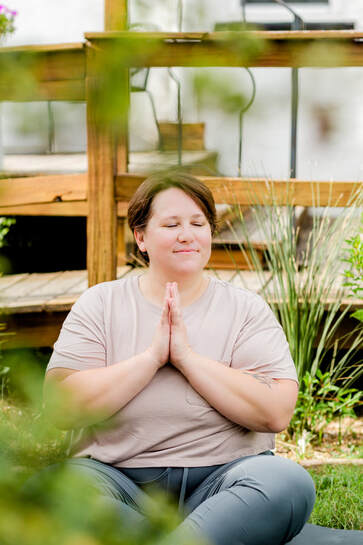
 RSS Feed
RSS Feed
